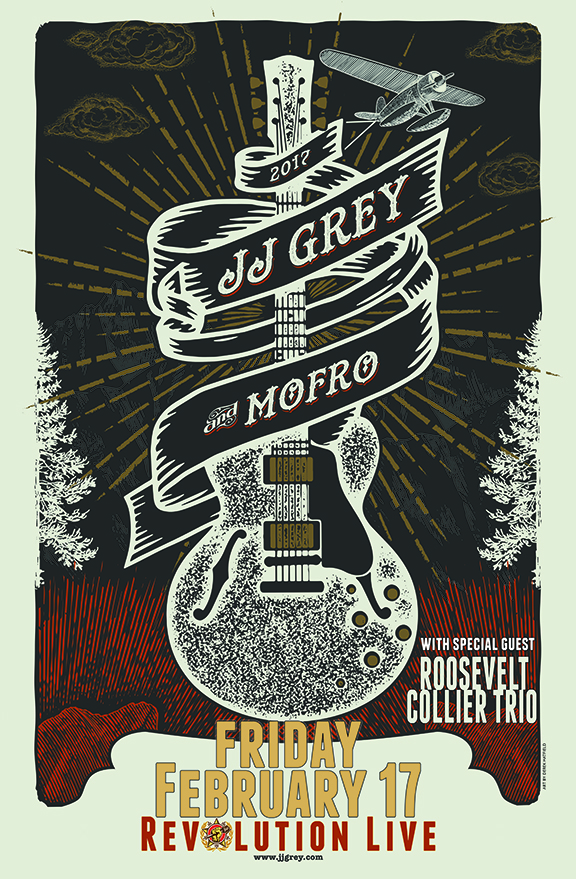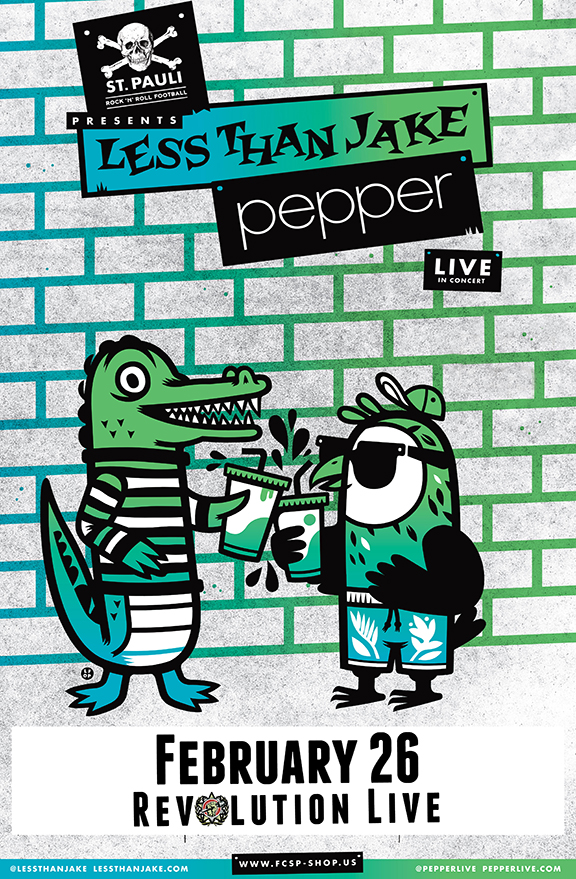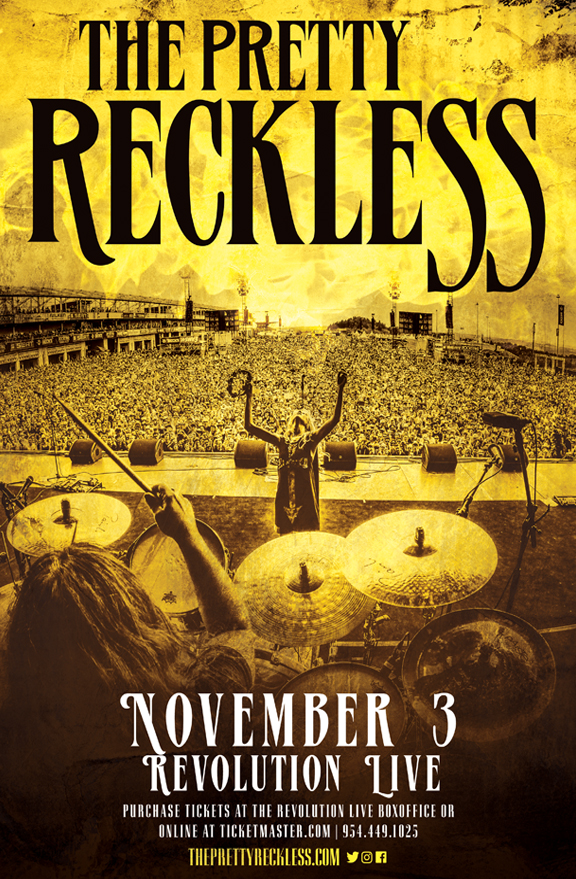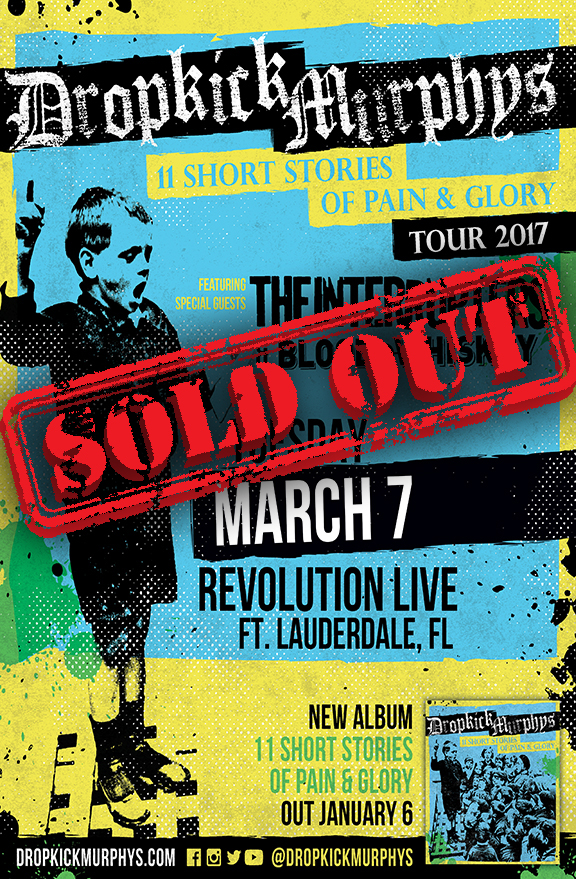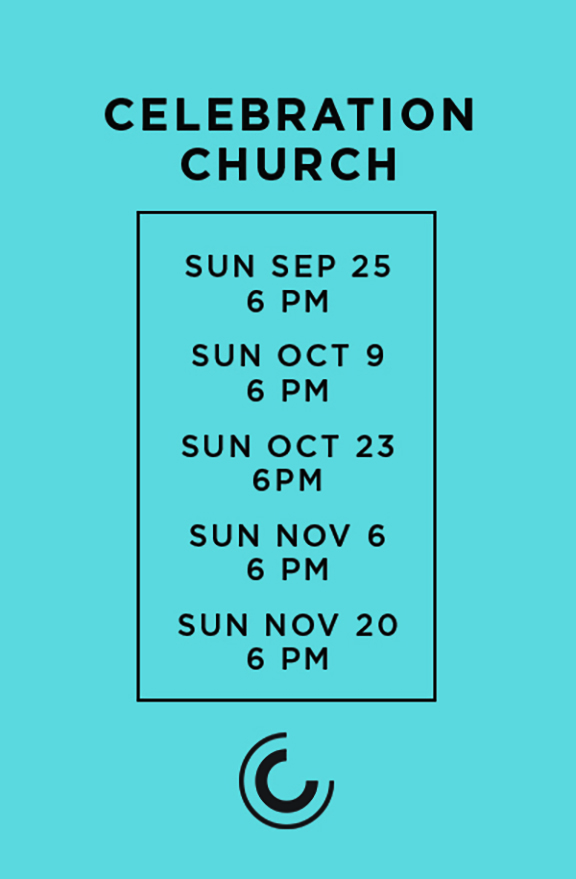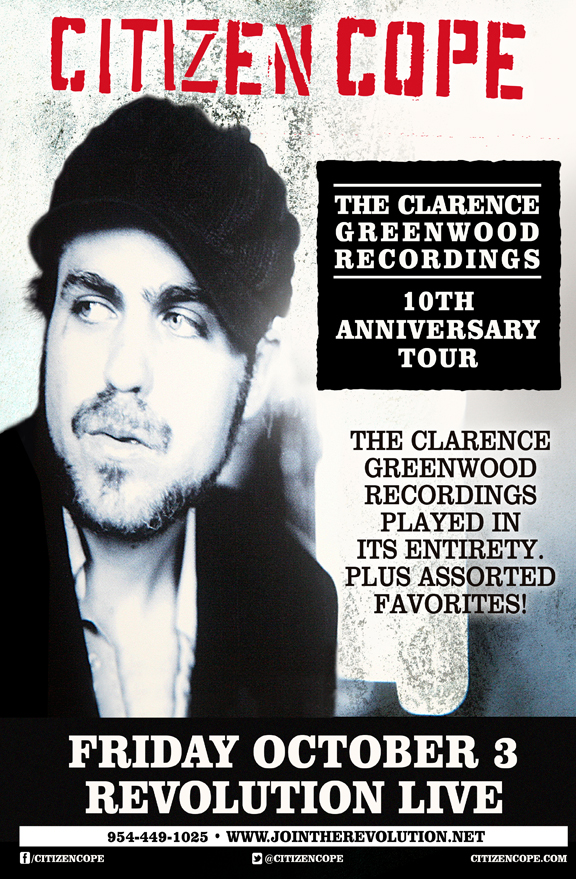From the days of playing greasy local juke joints to headlining major festivals, JJ Grey remains an unfettered, blissful performer, singing with a blue-collared spirit over the bone-deep grooves of his compositions. His presence before an audience is something startling and immediate, at times a funk rave-up, other times a sort of mass-absolution for the mortal weaknesses that make him and his audience human. When you see JJ Grey and his band Mofro live—and you truly, absolutely must—the man is fearless. Onstage, Grey delivers his songs with compassion and a relentless honesty that captures the fierceness and intimacy that defines a Grey performance. Grey and his current Mofro lineup offer grace and groove in equal measure, with an easygoing quality that makes those beautiful muscular drum-breaks sound as though the band has set up in your living room.
ST. Pauli Presents Less Than Jake & Pepper
Less Than Jake are back!
“But they never went anywhere, “you protest. Well reader, in that sense you are correct. But this fall they’re not only serving up their first full-length in five years, but-after more than two decades together also embracing a total back to basics approach .
Throughout a career that has run the gamut from salt-releases and small indie imprints to large independent labels and major music conglomerates, the band has always been more than the sum of its parts. Now more than ever, though, they espouse their stature as a DIV collective that works together-or at least in tandem with a few trusted allies-on every element of their creative output. Drummer Vinnie Fiorello recalls, “We started out very internal and nowadays we handle a lot internally again.”
The result of their old school approach is the old school sound of See The Light created without any external meddling from corporate lackeys. “Everyone had their alone time with chords and some quick structures; we all put our ideas down before we got together,” says Vinnie,” Then we sat at an octagon table in our warehouse and went through: this is what we think about this song, maybe we should do it ska maybe we should do it punk-true band songwriting in essence.”
Not only was the songwriting a true group effort, but -like the three EPs the band have released since 2008’s long-player GNV FLA -so was the actual recording of See The Light, which was tracked entirely at Gainesville’s The Moathouse, owned by LTJ bassist Roger Lima, who took lead production duties with communal input and assistance from his four band mates and live sound engineer.
“Roger has been recording our demos since the beginning of the band and steadily has worked his way up learning about studios from everyone we’ve worked with in the past “says trombone player Buddy Schaub. With no ticking clock and no studio fees piling up the band used their breathing room to create somewhat of a rarity in today’s prefab music world: a full-length album that gels as a complete thought, lyrically and musically, Buddy adds,”I think this is one of the closest representations of our band to date. We’re all really excited for this record t o get out into the world and we can1wait to hear what people thinkI”
Like 2000’s release Borders and Boundaries the new record was mixed at the famed Blasting Room by punk rock legend Bill Stevenson (Descendents, Black Flag) and Jason Livermore, but don’t let that lead you to believe that there’s anything same-ish about See The Light. ” f you’re expecting retreads and repeats,this record will disappoint,” exclaims Roger.” t’s all new songs and new vibes only recorded in our old school way.”
While some other bands of a certain vintage are latching onto musical trends you won’t find any dubstep beats or vocoder distortion on See The Light-a titie that nods to the band’s history of marrying dark lyrical content (the tunnel) to bouncy musical arrangements (the light at the end). Less Than Jake aren’t turning away from their roots, and echoing Mark Twain, Fiorello points out that the rumors regarding their genre’s demise are greatly exaggerated.” Punk has been declared dead every year for 30+ years and it’s still going stronger than ever. People like to declare things dead just because it’s dead to them but if bands are passionate about what they’re doing they’ll attract fans who are passionate.”
As fits a band born long enough ago to now be of legal drinking age, Less Than Jake pulls in a multi generational audience, which Vinnie notes is often a family affair, “Our crowd now is 16 to 40, and Ive met kids as young as eight or nine Dads bring their sons and it’s a weird rite of passage; moms bring kids in saying, ‘We’ve watched you guys for 15 years. ‘But will the band stick around long enough to draw in a third generation of fans? “I don’t know man, I think our guys on that would be NOFX and Bad Religion.
When you see Fat Mike or Bad Religion hang It up, maybe : but like them, we’re gonna ride that
out. “We’re glad to be along for the ride Hop on board when See The Light sees the light on November
121
Save Ferris with special guests Baby Baby
SAVE FERRIS is a ska-punk band formed circa 1995 in Orange County, Southern California. Their name is a reference to the 1986 film Ferris Bueller’s Day Off.
The band formed after the dissolution of a number of Southern California bands. With Monique Powell as manager, front person, and co-songwriter, the band began to book shows around Southern California to a great underground response.
Financed by Powell’s sister, the band released their debut EP “Introducing SAVE FERRIS” on Powell’s label, Starpool Records, in 1996. They ended up selling close to 20,000 copies of their EP out of the trunks of their cars, with huge support from Orange County independent record shops and fans. That year, Powell provided vocals on the Reel Big Fish song “She Has A Girlfriend Now” on their album “Turn the Radio Off” (Mojo).
With Powell as manager and lead, and as favorites of KROQ radio’s legendary Rodney on the Rock, SAVE FERRIS created a presence on LA’s KROQ radio, possibly being the first unsigned band to do this in LA alternative radio history. Later that year, the National Academy of Recording Arts and Sciences gave the band a Grammy showcase award for best unsigned band, earning them a recording contract with Epic Records (SONY).
Dillinger Escape Plan
The Dillinger Escape Plan create maniacally intense, crushingly metallic, and decidedly hardcore punk-infused jazz-time-signature-invoking compositions displaying an unparalleled musical bravery, precision musicianship, meticulously thought-out, and complex structuring, and rigorous physical endurance. The band’s guitarists and drummer are regular features in publications geared toward the guitar- and drum-playing set. The depth of extremity and mental challenge presented by their music virtually defies description, at once recalling the mind-wandering spirit of the Mahavishnu Orchestra, the complex heavy metal of latter-day Death, Cynic’s solitary death metal achievement, and the progressive hard rock of Rush. Their performances bring to mind the anarchic charge of early Guns N’ Roses shows, and the sophistication that drives their craft should awe fans of classy art rock bands like Radiohead. This is bound to be one of the best live shows of the year! Don’t miss this!
The Pretty Reckless
After topping the rock charts in 2014 and 2015, The Pretty Reckless returns with their extraordinary third studio album Who You Selling For, due October 21st on Razor & Tie. The new album is the band’s anticipated third studio album and the follow up to Going To Hell, which spawned the biggest rock song of 2014 in “Heaven Knows” and a total of three #1 Mainstream and Active Rock hits. The first single from the new album, “Take Me Down,” premiered worldwide July 15th on iHeart Radio and impacted at rock radio four days later on July 19th, quickly climbing to #7 on the chart.
Jam Cruise Post-Party Karl Denson’s Tiny Universe & The Motet Presented by JamBase
It’s a Post Jam Cruise Jammin’ Concert
Karl Denson’s Tiny Universe are back in action. The show will give fans the chance to experience what is highly regarded as one of the best live bands on the planet. Karl, who now serves as the saxophonist in The Rolling Stones, is fresh off a tour with the legendary rock band that included the highest grossing concert festival of all time, Desert Trip. With KDTU, he’ll be showcasing material from his forthcoming studio album, due in early 2017, as well as previous acclaimed KDTU recordings like New Ammo and Brother’s Keeper. Audiences can also expect a handful of KDTU’s super-charged covers by the likes of Prince, The White Stripes and Beastie Boys.
You can’t fake the funk, and The Motet bring it on hard with a signature style that slaps you in the face with sounds that are fresh and unique. The Motet is an American funk, afrobeat and jazz influenced group based in Denver, Colorado. An exuberant, lithe outfit, the Motet is known for their high-energy live shows and cross-pollinated musical sound. It’s a sound they’ve captured on such albums as Breathe, Play, Music for Life, and Instrumental Dissent. The album Dig Deep found them incorporating electronics into the mix. The band’s seventh studio album, the eponymously titled The Motet, featured a more collaborative approach than previous albums. Their newest album, Totem, was released July 8th, 2016.
Dropkick Murphys 11 Short Stories of Pain & Glory Tour 2017
Dropkick Murphys are an American Celtic punk band known for their loud, energetic live shows. The band was initially signed to independent punk record label Hellcat Records, releasing five albums and making a name for themselves locally through constant touring and yearly St. Patrick’s Day week shows held in and around Boston. The single “Tessie” became the band’s first mainstream hit and one of their biggest charting singles. The band’s final Hellcat release, The Warrior’s Code, included the song “I’m Shipping Up to Boston”; the song was featured in the Academy Award-winning movie The Departed, and went on to become the band’s Platinum-selling single and remains one of their best-known songs. The band then began releasing music through their own imprint label. The Meanest of Times made its debut at No. 20 on the Billboard charts and featured the successful single, “The State of Massachusetts”, while Going Out in Style was an even bigger success, making its debut at No. 6, giving the band their highest-charting album. The band’s eighth studio album, Signed and Sealed in Blood made its debut at No. 9 on the Billboard charts. The band is currently recording their ninth studio album which they expect to have released by the end of the year or early 2017.
Worship Night with Celebration Church
Our teams are gathering THIS SUNDAY NIGHT alongside the @celebrationftl family for Worship Night! We are pretty excited about it.
If you’re in the area, join them at Revolution Live at 6pm!
October 9th | Revolution Live | 6pm
Citizen Cope – Clarence Greenwood Recordings 10th Anniversary Tour
Citizen Cope – Clarence Greenwood Recordings 10th Anniversary Tour
with Full Band
“This full band tour celebrates the 10th anniversary of the release of the Clarence Greenwood Recordings. For the first time ever Citizen Cope will perform the record in its entirety, plus a second set of other Citizen Cope favorites.”
$1 per ticket sold will go to Turnaround Arts to purchase musical instruments for middle schoolers in Lame Deer, Montana—a community on the Northern Cheyenne Indian Reservation. Lame Deer is part of Turnaround Arts http://turnaroundarts.pcah.
“Rawness improbably balanced by a mixture of danger and delicacy,” says one Rolling Stone writer, “is what gives Citizen Cope his edge. As a singer, songwriter and producer, he stands alone—an artist immune to corruption.”
Dug deep into the rich soil of American music, Cope’s roots are complex. You may think of Bill Withers or Neil Young or John Lee Hooker or Van Morrison or Willie Nelson or Al Green. Yet, listening to Cope, you also may think of none of the above. You may not think at all, but rather feel a man exposing stories that haunt his heart. In the past years, he has produced albums of depth and distinction, each a critical chapter in his search for a sound that paints an auditory American landscape in which despair wars with hope and hope, tied to love, is elusive. Cope finds his groove that, with only slight variations, will fuel his tales of seeking hope in hell. The groove becomes a mantra and the mantra, sung in a voice that is both disarmingly sincere and studiously ironic, stops us in our tracks. Cope tracks the relationship between terror, fantasy and reality. Art requires defense. Without art, we can’t cope. But Cope’s art isn’t the high art of elitism; it’s the low art of funk. The voice of the singer is half-hoarse, half-hilarious, wholly hypnotic. He has toured tirelessly. He has brought his stories—with a band or simply with his guitar—to whatever venue would have him. His motivation to make music directly in front of people, no matter the size of the crowd, has won him a vast audience in America and abroad.
An Evening with Big Head Todd and the Monsters Featuring Ronnie Baker Brooks and Hazel Miller
Since their formation in the mid-’80s, Big Head Todd & the Monsters have continued to evolve and explore, moving beyond their Colorado club circuit roots to become one of the most adventurous, respected and durable bands in America. Through constant touring and a zeal to travel down new musical avenues in the studio, BHTM (as their dedicated fans call them) have honed their collective stew of influences into a trademark hybrid sound that’s immediately recognizable. Now, with Black Beehive, their maiden release on Shout! Factory (February 4, 2014), the quartet has made its most personal and poignant album to date, a collection of new studio tracks that, says co-founder and figurehead Todd Park Mohr, “allows us to truly reach our audience through the language of the blues.”
Recorded at Butcher Boy Studios in Chicago, Mohr’s hometown of the past seven years, and produced and mixed by Grammy-winning multi-instrumentalist Steve Jordan (whose previous production credits include John Mayer, Buddy Guy, Solomon Burke and Robert Cray), Black Beehive arrives a quarter-century after the group’s debut album, Another Mayberry, first put Big Head Todd & the Monsters on the map beyond their home base. Today, the original trio—Mohr on guitar and vocals, Brian Nevin on drums and vocals and Rob Squires on bass and vocals—along with keyboardist/pedal steel guitarist Jeremy Lawton, who joined in 2004, are still opening themselves to new possibilities even as they further explore their roots. “It has some contemporary elements that bridge a gap between alternative pop and traditional blues,” says Mohr about Black Beehive, whose title refers to the late British soul singer Amy Winehouse, the inspiration behind the album’s title track.
The band approached the recording in an old-school organic fashion, playing together in the studio, which Mohr describes as “a big open space,” and sticking to the basics. “I played resonator guitar on almost every song and most of the album is kind of simple: guitar, slide guitar, drums and bass,” he says. “We only had two guests on the album. One was Eddie Shaw, who was Howlin’ Wolf’s harmonica player for many years, and Ronnie Baker Brooks, who played guitar. And Steve Jordan played on almost every track—various things, percussion, rhythm guitar.”
Jordan, whose incredible career began when he joined Stevie Wonder’s band as a teenager, later going on to perform in the Saturday Night Live band, Paul Shaffer’s World’s Most Dangerous Band on Late Night with David Letterman, and backing John Belushi and Dan Akroyd when they toured as The Blues Brothers, has an unbelievable production roster but is also well-known as a drummer. A member of the John Mayer Trio, Jordan also toured and recorded with Keith Richards and the X-pensive Winos, joined Eric Clapton for his 2006 European tour, and has also worked with Bruce Springsteen, Neil Young, Bob Dylan, B.B. King, James Brown and more.
Mohr first met Jordan through the legendary guitarist Hubert Sumlin, who died in 2011. “We were planning to have an 80th birthday party for Hubert,” says Todd, “and Steve was the musical director. When Hubert passed away it ended up being a tribute at the Apollo Theater: Eric Clapton and Billy Gibbons and Keith Richards—there were probably 35 incredible musicians at this thing. I was immediately awestruck by Steve’s command of the material and his understanding of it and his ability to get it done on short notice with all these people. I thought this guy would be an unbelievable producer for me to work with. I sent him some demos and he was up for it.”
As he began writing material for the album, Mohr drew from both his own life experiences and events in the news. The title track was written following Winehouse’s death. “I love her voice and her performances, and obviously her shenanigans were part of her persona,” says Mohr. Several other songs were also ripped from the headlines, including “We Won’t Go Back,” which Mohr penned about the 2010 Arab Spring uprisings in the Middle East, and “Fear, Greed and Ignorance,” whose topical lyrics declare that it’s those three dishonorable traits that are “driving you America off the edge of the road.”
Not every track is quite so pointed, however. “Hubert’s Dream,” is a nod to the late Mr. Sumlin, while album opener “Hey Delila” is Mohr’s tribute to another blues giant, Memphis Minnie. “I happened to acquire a great example of her instrument, which was a 1941 Spanish National resonator guitar. Plus, she has an incredible life story,” he says. “Everything About You” is dedicated to NASA, who called upon BHTM to awaken the Discovery space shuttle crew with their song “Blue Sky” in 2011, marking the first time live music was ever used for that purpose.
Among the album’s other tunes, “Josephina” and “Seven State Lines” are what Mohr describes simply as “blues-based themes,” while “I Get Smooth” is “a comedy piece.” The cautionary tale “Travelin’ Light” is the story of lovers who “threw away our hearts and fled” and the moving “Forever Bonnie” is based on a true story of a “gentleman who got a love letter delivered to him 53 years later by the Postal Service.” Black Beehive also includes, as a bonus track, Big Head Todd & the Monsters’ burning take on the Jimmy Reed blues classic “Baby What You Want Me To Do,” a song that Jordan requested they cut.
For BHTM, Black Beehive serves as both a reaffirmation of the band’s roots and a step into the next 25 years. Founded as a trio in Boulder, Colorado in 1986, Big Head Todd & the Monsters quickly built a strong reputation on the local club circuit. As word of their soulful and intense live show traveled around the nation they found themselves filling larger and larger venues. BHTM have now played Denver’s historic Red Rocks Amphitheatre more than 20 times, and are embedded in the fabric of Colorado’s music scene.
Beginning with Another Mayberry in 1989, critics noticed what audiences at BHTM live shows already knew. The All Music Guide praised the “subtlety of Mohr’s lyrics” and his “individual world view.” But it was the follow-up, 1990’s Midnight Radio, that truly established the band as a creative force to be reckoned with. Its popularity led to a major label contract and the release of the platinum-selling Sister Sweetly in 1993. With subsequent albums such as 1994’s Strategem and 1997’s Beautiful World, the band earned a place among the top names on the jam band circuit, solidified by 1998’s Live Monsters, the first official concert recording by Big Head Todd & the Monsters. Riviera was released in 2002, followed by 2004’s Crimes of Passion, of which The London Times stated “American rock doesn’t get anymore classy than this.” Later that year, Live at the Fillmore was released to critical praise. All Music Guide called the release, the band’s first with Jeremy Lawton, “loud, proud, and full of righteous raw ambience.”
The band, which has always proudly controlled its own business dealings and marketing, gave away 2007’s All the Love You Need through their email list, radio stations, and magazines. Their ninth studio album, Rocksteady, followed in 2010. Said Examiner.com, “With Rocksteady, the Colorado boys prove they can sprinkle in a plethora of differing music styles and still rock.” 2011’s 100 Years of Robert Johnson, the album preceding Black Beehive, found the group paying tribute to the pioneering bluesman while performing as Big Head Blues Club (along with other notable blues legends, including B. B. King, Charlie Musselwhite, Cedric Burnside, David “Honeyboy” Edwards, Sumlin, Ruthie Foster, and Lightnin’ Malcolm). The band toured behind the album with a few of the guest artists, marking some of the final performances by both Edwards and Sumlin. Mohr kland appve a more mature perspecists at the aforementioned ed artist at the aforementioned tribute show at the Apollo Theatre. paid tribute to Sumlin in 2012 when he served as a featured artist at his tribute show at the Apollo Theatre.
With all of that history behind them, it would be easy for Big Head Todd & the Monsters to play the nostalgia card and fall back on past glories, but that’s of no interest to them. BHTM still performs, and devoutly loves, the material that first brought them to their fans – material they now approach with a fresh, seasoned perspective. “As a writer and as a human being there’s a big difference between being 21 and 47,” says Mohr. “Having said that, I think a lot of those compositions are still lyrically sound, even though it’s hard for me to imagine that I would have had the experience to write about the stuff I did. Obviously, I think the band has gotten better over the years because when you develop yourself you continue to improve, and I think we have improved musically. As a writer, I’m really pleased with where I’m at right now.”
“A lot of it had to do with my experience with the Robert Johnson project,” he adds. “That had a large impact on how I looked at music. For a large portion of my career, I’ve been trying to reproduce the success of Sister Sweetly, just as a touchstone of ‘this is a pop song, or rock-pop.’ Pop songs have pretty narrow rules when it comes down to it. Generally you need a chorus and a bridge. The blues material from Robert Johnson’s day, the prewar blues, was so fascinating to me because of the fact that it is pop music but there are no choruses. It’s a different way of having repetition and themes and a different goal for a pop song. The music is shared by everybody because it’s passed down through tradition. The whole spirit of what one is going for is radically different than pop and that really became exciting for me because I could see a new way to reach people.”
When Big Head Todd & the Monsters launch their extensive national tour behind Black Beehive in January—which will continue through the summer and hit most major markets—they will be honing the album’s ageless blues along the way, and simultaneously affirming their own longevity. It’s clear that they possess a rare musical wholeness that has not only survived for 25 plus years, but still has them looking forward to creating music together night after night. “The other guys have shown great support of my songwriting and what I’m able to do, and all of the band members bring a lot to the plate, both musically and as a unit,” says Mohr. “No one ever expects a band to last this long. We’re very, very lucky.”
Nonpoint
Nothing can stop Nonpoint. The band continues to deliver unique, uncompromising, and undeniable hard rock. Weathering lineup changes, label shifts, and other trials and tribulations, founding members Elias Soriano [vocals] and Robb Rivera [drums] regrouped with fresh blood—Dave Lizzio [guitar], Adam Wolosyzn [bass], and Rasheed Thomas [guitar]—and captured pure fire this time around. In addition, they remain one of the most consistent and incendiary live acts on the scene. Having shared the stage with everyone from Sevendust and Stone Sour to Papa Roach and Buckcherry as well as appearing at festivals such as OZZfest, each performance stands out as an experience their fan base fervently follows. At the end of the day, Rivera wants to give back via the music. “We try to help people through our art,” he exclaims. “So many kids have connected to our songs over the years, and they’ve supported us unconditionally. We fought through so much, and we never gave up. I hope they get a positive message from this. It doesn’t feel like we have some kind of goal. It feels like we have a purpose, which is to put out hopeful music. When this process started, a fuse got lit. We’re not stopping until it all burns.” Nonpoint’s flame will only rise higher.
NOFX with Dillinger Four, Masked Intruder, The Implants
If someone were to walk into a store and pick up their very first punk record today, they could do much worse than NOFX, This quartet, fronted by Fat Mike, plays fast-paced pop punk, mixed with elements of ska and hardcore. The overall attitude of the band dwells heavily on traditional punk and DIY ideologies. Fat Mike is a very charismatic frontman for a band – depending on your definition of charisma, that is. He is bold and often snarky and sarcastic, as well as often blatantly political. They are great qualities for a punk rock band that is out to make people think and push a few buttons. NOFX has been a testament to the potential of a punk band on an independent label to enjoy popularity and success.
Formed in Berkeley, California and relocating to Los Angeles, NOFX steered clear of major labels and commercial exposure over the course of their career, recording an impressive number of full-length albums plus an assortment of EPs and singles. They have made a few videos, but have not given permission for them to be played on mainstream channels like MTV or VH1. In addition to the blatantly political nature of the band’s lyrics, Fat Mike is also politically active. He launched Punk Voter, a collection of punk labels, bands and fans that seeks to educate and inform America’s youth and get them to vote. Specifically, their goal at one time was to vote George W Bush out of office, but even after his reelection, Punk Voter still continued to actively educating young voters about issues that affect them.
